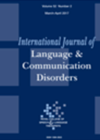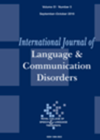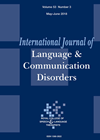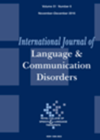
Journal Reviews
Increased intensity of treatment: intensity does not improve outcomes
There is a paucity of reports regarding the intensity and appropriate duration of treatment required to improve the language abilities of children with language impairment. This study used direct measures such as the time spent on language, the frequency, number...
Comparison of linguistic profiles in three groups of children with hearing loss and specific language impairment
Spoken language deficits in children with hearing loss early in life are attributed to auditory speech perception limitations. It is assumed that hearing following cochlear implants (CIs) will improve these language deficits. However, the studies have shown that although cochlear...
Impaired music perception in children with specific language impairment
This study compares musical skills of children with typical language development with those of children with specific language impairment. Both groups received a test consisting of a melody and a song identification along with a test battery to assess receptive...
Specific language impairment in bilingual vs monolingual children
Research has focused mainly on the specific language impairment (SLI) in monolingual children. This article focuses attention on the SLI in bilingual children. The study was conducted with bilingual children from Luxembourg and monolingual children from Portugal who all had...
Ideal terminology for unexplained paediatric language problems
This paper aims to open a discussion about the different labels being used to refer to children’s unexplained language impairments. A wide range of terminology has been applied creating confusion, impeding progress of research and access to appropriate services. For...









